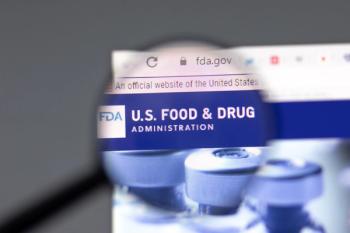
- Applied Clinical Trials-05-01-2007
- Volume 0
- Issue 0
Europe is Disenchanted with Trials Directive
Lack of regulatory cohesion across member states a source of frustration for many in industry.
In addition to the ongoing European debate about first-in-man trials (of which, more below), tensions persist over the European Union's faltering attempts to build an effective regulatory framework on the basis of its little-loved clinical trials directive.1
The key issue, for the pharmaceutical industry, is the lack of consistent implementation and interpretation of the directive across the member states.
Peter O'Donnell
Companies are particularly concerned over the lack of harmonization for applications for clinical trial authorizations as a result of different dossier requirements and/or the application of the law. They complain of increased bureaucracy and uncertainty arising from the varying national requirements that the industry faces. There are also differences in the way that member states interpret the definition of investigational medicinal products or require safety reporting, and there are issues relating to good manufacturing practice in some member states where qualified person declarations are not being accepted for non-EU manufacturers, or where differences have arisen over compliance by contract manufacturers of active biological ingredients.
The European Commission has set up a Clinical Trials Facilitation Group in a bid to ease the pain. But this does not go far enough. The European biotech industry association, EuropaBio, insisted recently—in a comment typical of those being heard in industry circles across Europe—that fundamental issues need urgent attention to improve the current regulatory environment for the approval and conduct of clinical trials in the EU.
Member State Mix-and-Match Medley
Failed attempt at harmonization
The lamentable conclusion drawn by many companies is that the clinical trials directive fails to achieve any harmonization in the regulation of clinical trials—although this was initially its main objective.
The potential benefits of synergies and time savings have not been realized, they complain. Companies and industry associations say that individual member states impose different requirements, sometimes going beyond the directive, and always disproportionate with the objective of protecting safety of trial subjects.
The result is different regulatory standards being applied by the member states in granting clinical trial authorizations, and these differences are hindering companies—particularly smaller firms—from initiating and conducting multicenter trials across the EU. Smaller firms say they suffer most because their financing depends on meeting certain critical regulatory milestones, including trial approvals.
Smaller firms say they do not have the financial resources and manpower to deal with differing national requirements across the EU. The significant administrative burden thus imposed is making Europe less competitive in attracting companies to undertake clinical development, and companies are already deciding not to conduct their clinical studies in the EU.
Ineffective guidelines
The Commission's guidelines to assist applicants and competent authorities in interpreting the legal requirements are often ineffective, industry complains, because member states only follow guidelines when it suits them. The difficulties spring from a wide range of national practices.
For instance, member states have adopted different requirements for defining the characteristics of the investigational medicinal product dossier. In Germany, the definition is broader than elsewhere. The Czech Republic is conspicuously accused of requiring as much data for a Phase I trial as for a marketing authorization application. Some member states are treating reference products as investigational products, and demanding that they may no longer be supplied by the investigator, but must come from the sponsor (and be labeled as clinical trial materials, which presents difficulties when another company's products are involved).
In addition, there is a general lack of clarity over national requirements. Companies submitting a clinical trial authorization application to several member states often face additional local requirements, but they often find it difficult to identify them in advance because they're usually not documented in any guidance or published in a centrally accessible place. The Commission did issue guidance in 2005 on how competent authorities should handle applications for trial authorizations, but it did not take into account the national requirements that were then in force, which have remained largely untouched.
Industry is complaining of different outcomes of review in multinational trials, with inconsistencies in review times, demands for protocol changes, and ethics committee review. Similarly, member states are interpreting the concept of "substantial amendment" to a trial in different manners across the EU—with the UK considered the most demanding authority in this respect.
The scope of the requirement to hold a manufacturing license for operations commonly undertaken at trial sites continues to allow for wide interpretation too, with Germany frequently invoking this provision in circumstances where—in the view of many companies—it should not be applied, such as the relabeling operations that are occasionally required for extension of shelf life. The UK too is accused of being overzealous by requiring a manufacturing license for clinics to conduct labeling—simply because the UK legislation transposing the directive did not include the exemption the EU allowed for clinics.
The uncertainties over reporting requirements also worry the pharmaceutical industry. This column already alluded last month (see Applied Clinical Trials April 2007) to anxieties expressed at a recent meeting of the European Forum for Good Clinical Practice over requirements to send all reports of suspected and unexpected serious adverse reactions to ethics committees, which are, as a result, inundated with raw data.
In addition, member states differ over reporting requirements in respect of who needs to be informed. The UK routinely requires that ethics committees be informed, but this is not the case in many other member states. Electronic reporting is required by some member states, while others still accept paper copy, and the UK does not accept electronic reports.
The link between reporting for an individual suspected and unexpected serious adverse reaction and the central database is considered very unclear. And companies say they have received limited indication from national authorities as to what is expected in relation to submission of annual safety reports—particularly for clinical trials that started before May 2004, when the directive came into effect.
Senior EU officials recognize that obstacles still remain in terms of the administrative burden for companies and the differences in the implementation of the directive. The Commission is giving priority to overcoming these in relation to approval times and procedures, idiosyncratic national requirements, the definition of investigational products, and the activities of ethics committees. The Agency is likely to organize a major meeting later this year to review progress across the EU in implementing the directive. And officials admit that if it looks impossible to fix things by further tinkering with implementation guidelines, it may be necessary to revise the directive itself.
First-in-man guideline
As if that wasn't enough, some companies have expressed concern about a general delay in approving trials involving monoclonal antibodies following the abrupt ending of the TGN 1412 trial in the UK—on which this column commented in February.
The TGN 1412 story is moving forward, too. The European Medicines Agency's Committee for Medicinal Products for Human Use has recently adopted a draft guideline on requirements for first-in-man clinical trials for potential high-risk medicines.2 The draft guideline was released for a two-month public consultation period in March. It has emerged from the extensive review and discussion that national authorities and the Agency have undertaken of the very serious adverse reactions that occurred during the first-in-man clinical trials of TGN 1412. The decision to create a guideline is intended to minimize the risk of such serious adverse reactions occurring.
It has been prepared by national experts in clinical trials and nonclinical research, and focuses on potential high-risk medicines—which it defines as products where the mode of action, the nature of the target in the human body or the limited relevance of animal models for the prediction of pharmacological or toxicological effects in humans raises concerns that serious adverse reactions may occur.
The draft gives guidance on managing the transition from nonclinical studies to first tests in humans. It covers quality, nonclinical and clinical aspects, including the calculation for the first doses to be given to human subjects, the initial dose-escalation trials, and the management of risk.
A meeting is scheduled for June 2007 at the Agency with interested parties—the European Commission, national authorities, the pharmaceutical industry, patient and health care organizations, academia, and learned societies—to consider the feedback received and to finalize the guideline for publication.
Peter O'Donnell is a freelance journalist who specializes in European health affairs and is based in Brussels, Belgium.
References
1. Clinical Trials Directive 2001/20/EC.
2. http://
Articles in this issue
over 18 years ago
CRO Shifts in the Outsourcing Marketover 18 years ago
Consent Forms: No Easy Readover 18 years ago
eShowcase: CTSD Version 2.5over 18 years ago
Investigative Sites Unlock the Door to Success in Indiaover 18 years ago
Trials for Pediatrics and Proteins Under Debateover 18 years ago
eShowcase: Clinical Trial Analysisover 18 years ago
Vendor Quality Assurance Audits: A Formula for Successover 18 years ago
Ukraine Emerges as a Viable Location for Global Studiesover 18 years ago
eShowcase: Data JumpStartNewsletter
Stay current in clinical research with Applied Clinical Trials, providing expert insights, regulatory updates, and practical strategies for successful clinical trial design and execution.






.png)



.png)



.png)
.png)
